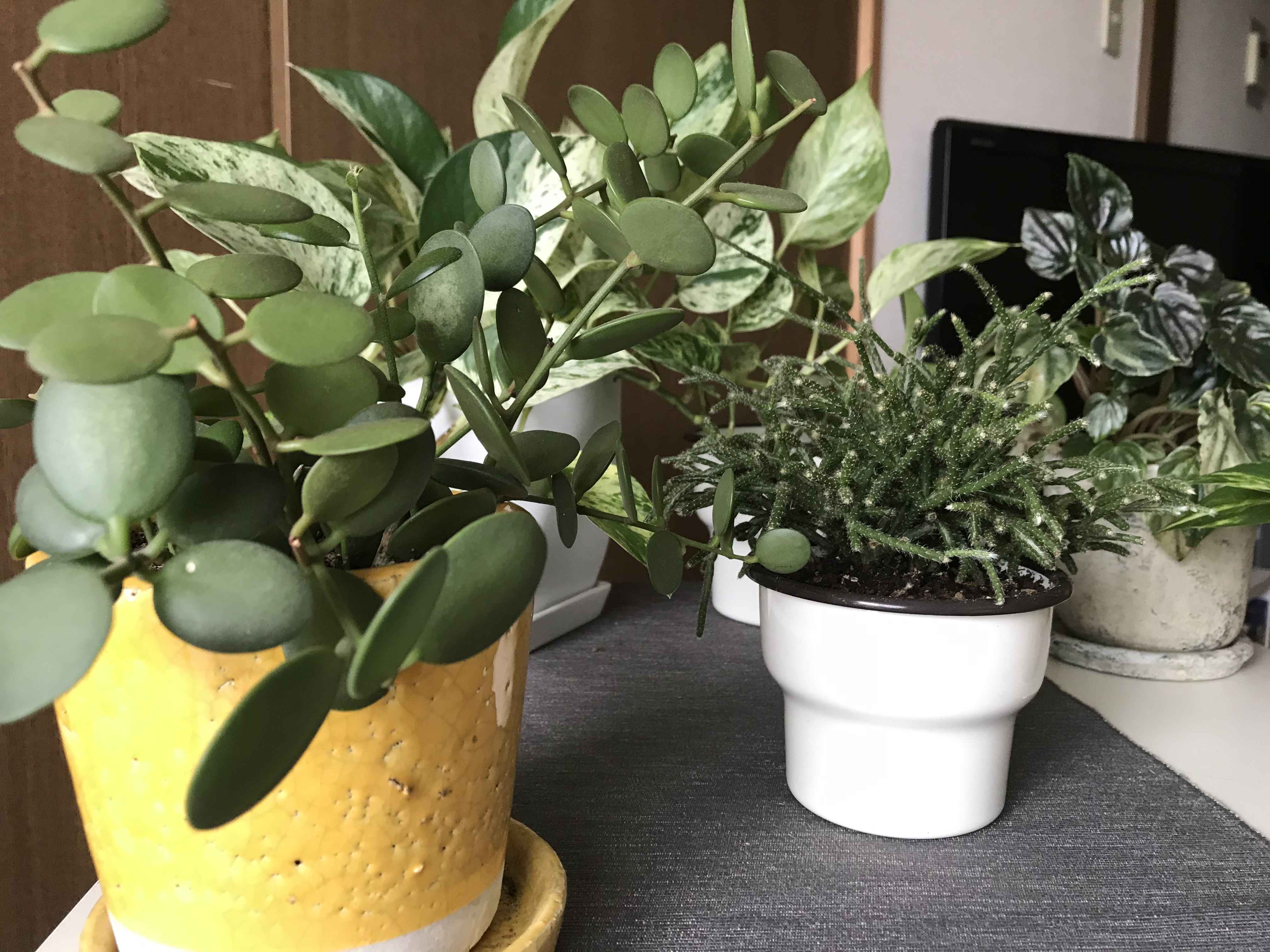This article originally featured in the November 2019 issue of Connect.
Natalie Andrews (Tokyo), Sarah Breault (Yamaguchi), Ezra Fleisch (Mie), Damien Levi (Tokyo)
edited by Eli Ferster (Kyoto)
Three expat gardeners share their experiences.
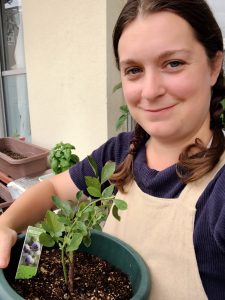
When it comes to filling up that empty space on your balcony, in that front yard plot, or simply by your window, the idea of cultivating plants can be as intimidating as it is enticing. Not only will you be getting your hands dirty, you’re going to be responsible for maintaining your little (or large) leafy friends and making sure they don’t get devoured by pesky insects or simply drop dead of their own accord. But for Sarah, Ezra, and Damien—three international residents tackling their first gardens in Japan—it’s clear that all it takes is patience, care, and research to make their gardens, and their relationships, grow and flourish.
Sarah came to Yamaguchi Prefecture from Canada already a seasoned gardener. With a background in environmental economics and horticulture, she didn’t hesitate to begin poking around the unused yard in her apartment block and looking for ways to fill up her balcony.
“The Canadian climate is very harsh and in the winter, unless you have a heated greenhouse or expensive infrastructure, your garden is pretty much dead,” Sarah explains. “In comparison, the winter climate in Yamaguchi is a lot kinder to plants. So, as soon as I arrived in town, I contacted the city to rent a community plot.”

She progressed steadily until December of 2018, when a back injury made it impossible for her to do much of the heavy work needed. Deciding to instead work on her Japanese, she went on down to the bookstore and happened across a book (all written in Japanese!) called “Easy Hydroponics”.
“[The book] was filled with pictures and mentioned all the material was available at Daiso. Since hydroponics (a method of growing plants in sand, gravel or liquid, adding nutrients without using soil) doesn’t require much lifting, I figured I could try—and this is how I ended up with a balcony full of vegetables!”
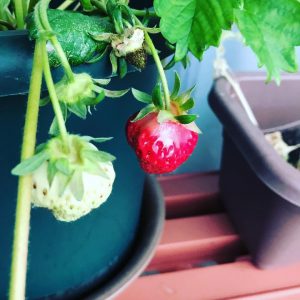
Her favourites so far, she says, are her strawberries. “Strawberries reproduce via runners like spider plants. Very quickly, your plant grows and starts reproducing itself and soon, your balcony is full of plants. My husband always laughs because I never have the heart to prune them, and just buy more pots until I cannot contain them anymore.”
And it’s not just her plants that have been thriving.
“Since I arrived and started helping around the community plot, as well as setting up my hydroponic balcony garden,” she said, “I’ve noticed my neighbours have started to do the same. The lady next door started planting flowers; the kids upstairs are amazed by my strawberries . . . I happily gave them runners because I had
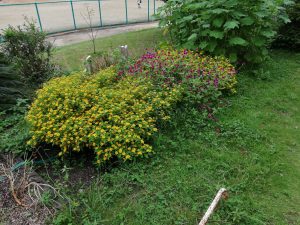
too many at that point, anyway. My Japanese is not very good and I’m more of a plant person than a people person, but I really feel like my gardens have opened a communication between myself and the community here. I also make sure to grow stuff they have never seen, like big beets, pumpkins and Brussels sprouts. And I always share my crops.”
Across the country in Mie Prefecture, co-veteran gardener Erza’s passion for gardening has also helped him put down roots in his school community. “I work more on the school’s gardens since I have more tools to work with and more infrastructure in general,” he admitted. “Although, I have recently started working on my garden in earnest.”

Ezra’s love of gardening was born from a childhood spent in South Africa where gardening was a way for his family to spend time together. “When I moved to Canada, I couldn’t do much gardening, so that became a part of my life I missed,” he reflected. “When I moved to Japan, I was delighted to find that I could garden again!”
When Ezra first arrived, he discovered that although he had been blessed with a front yard, the previous tenant of his house had left it in a mangled, debris-filled state—a state Ezra lacked the tools to take care of.
“This forced me to get outside my comfort zone to request gardening tools from my schools and make new friends with people other than my JTEs (Japanese Teacher of English),” he said, recounting how he tackled the neglected plot. “My garden saved me in the first couple of weeks of being here, since working on it gave me peace of mind during the hectic culture shock of moving to Japan.”
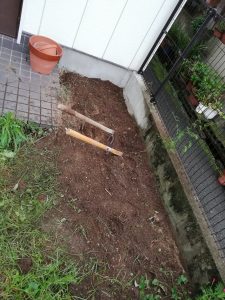
With a healthy mix of the new and familiar, it’s not hard to see why.
“My Bogainvillea (thorny ornamental vines) plant is my favourite. We had a big one at home, so having it here reminds me of home. I’ve also come to love the gourds I’m tending to in the school gardens. I’d never grown a gourd before, but they’re lovely.”
Unlike these two expats, who brought over pre-existing passion and experience for working the earth, Damien hadn’t acted on his interest in gardening until he moved to Japan in 2018 and “decided that [he] wanted to develop new hobbies that gave [him] a sense of accomplishment.” He has indeed drawn together a wonderful houseplant collection . . . and laughingly confessed his preferred plants “are the ones that thrive on neglect.”
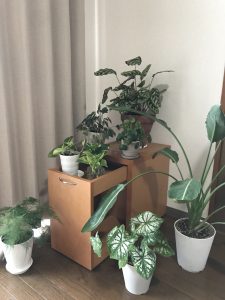
All jokes aside, Damien has obviously dedicated a good amount of time to research.
“The most difficult factors to contend with are adequate light and space. There’s only so much space next to glass sliding doors before you must consider hanging planters and bookshelves. I also have a bay window perfect for plants, but it gets so hot and bright that most end up scorched.” And during the winter months, the dry air threatens to turn his tropical-climate plants into brittle husks.
Like Sarah and Ezra, Damien isn’t a gardener to throw in the towel (trowel?) when things get tough. Even though one may not have significant gardening experience, it’s the willingness to get dirt under your fingernails that drives a would-be gardener to success. Some research and a humidifier later, those tropical plants were saved.
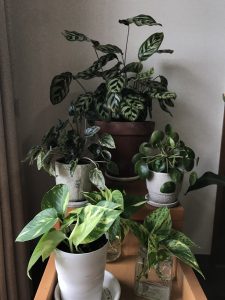
“If something unexpected happens, try not to freak out” is his message of caution. Indeed, starting as an amateur in a space full of problems, Damien now has a house full of plants, each with their own unique story.
“One of my favourites would have to be my beefy peacock plant (Calathea makoyana),” he said. “I originally bought it from a local nursery. It was in a bit of a bad way, but I nursed it back to health with perseverance and research. Unfortunately, it’s recently been stricken down with a case of spider mites, which I’m trying to manage while keeping it isolated from my other plants.”
In contrast with Damien’s roadblocks, Ezra’s major difficulties are local. The heavy rain in his prefecture makes his weeds grow “like wildfire”, and in amongst these weeds, copious amounts of spiders lurk. Ezra’s lucky to have nerves of steel and maintains he isn’t bothered by creepy-crawlies, but he is worried about another creature-related issue that’s very unique to his coastal/mountainous region.
“Apparently,” he divulged, “tanuki and macaques are both famous for stealing food from family gardens!”
Macaques (a type of Asian monkey), and tanuki (raccoon dogs) are well-known in Ezra’s region for, as it seems, being irritating little thieves. “When I told a fellow teacher I was planning to grow radishes and gourds,” Ezra said, “he threw up his hands in exasperation and warned me in very fast Japanese to be wary of the macaques, as they don’t fall for the tricks that other animals do.”
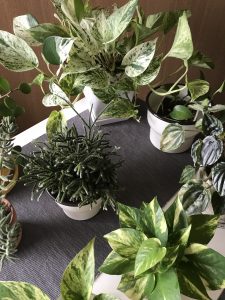
He’s safe for now, though, because in his own words: “I don’t have anything worth stealing . . . yet.”
As for Sarah, facing down an unfortunate injury and a looming language barrier has seen her gardening efforts bear fruit, both literal and figurative.
“I hate plastic packaging with a passion. Everything is wrapped three times in plastic in Japan, so keeping a garden lowers the amount of garbage we have. I can also grow vegetables unavailable here to buy—it’s very hard to find beets and orange pumpkins in Ube. Finally, the fruits in Japan are so expensive. I personally am disappointed they don’t make ugly crops available because I feel like there might be a lot of waste somewhere if you only sell perfect strawberries!”
But even more than the environmental points she’s scoring, the feeling of producing by oneself is a powerful one. “The week I realised my gardens produced enough that I didn’t have to buy as much at the store is my most memorable achievement,” she said. “It was, and still is, a very empowering feeling.”
Ezra’s gardening ventures allowed him to reconnect with his South African childhood and discover he had the power to exceed his self-expectations. “A major part of why I am so proud of creating a functioning garden is because I found I had the physical capability to clear and nurture [it]. Getting up-and-close to the earth and having a beautiful garden to come home to every day does wonders for my mental health.”
Damien’s pride lies in seeing the results of his physical labour, which has culminated in the welcoming ambience of a plant-filled house.
“When people come over to my house, they say that my plants add a brightness to the place that makes it feel more like a home! It’s so rewarding to see plants that were tiny when I bought them grow double, triple and even quadruple the original size over the course of a year.”
Without that initial peacock plant, he may not have been able to get to where he is today. Restoring it from a “small, sickly burnt-looking plant to a specimen that actually fits the name” gave him the confidence to tackle plants more difficult to care for.
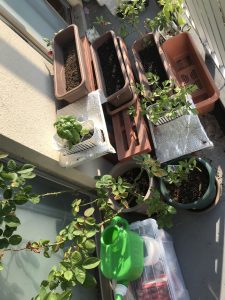
Caring for something and watching it grow lends a sense of empowerment—a sentiment that these three gardeners share. This pride and happiness has made its way into their daily lives, affecting their relationships with others and with themselves.
In closing, each has their own tips to offer amateur gardeners.
Sarah
“Look up the hydroponics book I have. It is definitely worth it. Everything you need is at the ¥100 store, even hydroponics solution! The book is called かんたん水耕栽培 決定版!”

Ezra
“Know your environment. Ask as many people for advice as you can, because they always know more about their home (the climate, soil type, and so on) than you do. Don’t be afraid if it doesn’t go well at first—in my experience, I’ve found it takes time to grow a green thumb.”
Damien
“It’s important to consider the environment of your home before buying any plants. Research how much light certain plants will need and the temperatures they can survive at. Start with something small and difficult to kill and see how that goes!”

Take them up on their advice, go buy some pots and plants, and get ready to create your own green space in Japan.
Mother of two from Ottawa, Canada, Sarah moved to Japan with her husband and two children after receiving her bachelor’s in economics from Carleton University. Passionate about sustainable agriculture, environmental economics and horticulture, she spends most of her free time farming and gardening. You can follow her work on Instagram @SARA_MAMAS_GARDEN.
Ezra is a Canadian/South African first-year JET based in Mie Prefecture, specifically the deep south. He enjoys photography, traveling, reading and nature in general. He focuses mostly on film photography and has two nature-focused Instagram pages: @moyashitake (for film photography) and @nimbus_wanderer (for cloud photography).
Damien is a second-year Kiwi JET based in Tokyo and a copy editor for CONNECT. He’s recently unlocked the level of adulthood where you turn off a movie halfway through and go to bed because you don’t want to be tired the next day. Check it—@damien_levi on Instagram!



![CONNECT ART ISSUE 2024 SUBMISSIONS [CLOSED]](http://connect.ajet.net/wp-content/uploads/2024/04/ARTISSUE-INSTA-600x500.png)
